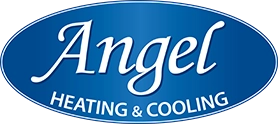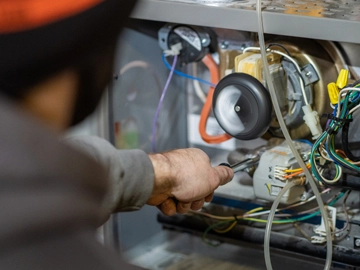How to Tell If Your Heat Exchanger is Cracked
Heater Repair Experts in Philadelphia
At Angel Heating & Cooling, we understand the critical role your HVAC system plays in ensuring the comfort and safety of your home. One of the key components of a gas furnace is the heat exchanger, and a crack in this component can not only diminish the efficiency of your system but also pose serious health risks. We’re here to guide you through the signs that indicate a cracked heat exchanger and the steps you should take if you suspect a problem.
What is a Heat Exchanger?
The heat exchanger in a gas furnace is a metal chamber where the heat from the combustion of gas is transferred to the air circulating through your HVAC system. Over time, due to various factors like age, corrosion, or poor maintenance, the heat exchanger can develop cracks.
Why is a Cracked Heat Exchanger a Concern?
A cracked heat exchanger is a serious safety hazard. It can allow harmful gases, including carbon monoxide (CO), to leak into your home. CO is an odorless, colorless gas that can cause illness or, in extreme cases, be fatal.
Signs of a Cracked Heat Exchanger
Unusual Smells: A strong, metallic smell—like the scent of formaldehyde—can indicate a cracked heat exchanger. This is due to the chemicals and gases being released through the cracks.
Soot Inside the Furnace: If you notice black soot accumulating inside your furnace, it may be a sign that the gas isn’t burning cleanly, potentially due to a crack in the heat exchanger.
Visible Cracks or Corrosion: While it’s not always possible to see cracks without professional equipment, visible signs of corrosion can be a precursor to cracking.
Water Around the Furnace: Unusual water leakage around your furnace can be a symptom of a cracked heat exchanger, as condensation is not being handled correctly.
Physical Symptoms: If family members start experiencing symptoms like headaches, nausea, or flu-like symptoms that seem to ease when leaving the house, this could be a sign of carbon monoxide poisoning.
Changes in the Flame: The flame in your furnace should be blue and steady. A yellow, flickering flame can indicate combustion issues due to a cracked heat exchanger.
What to Do If You Suspect a Cracked Heat Exchanger
If you notice any of these signs, it’s crucial to act promptly:
Turn Off Your Furnace: To reduce the risk of gas leakage or CO poisoning, switch off your furnace immediately.
Ventilate Your Home: Open windows and doors to allow fresh air to dilute any potentially harmful gasses.
Call a Professional: Contact Angel Heating & Cooling or a licensed HVAC professional to inspect your furnace. We use specialized equipment to diagnose and repair any issues safely.
Install Carbon Monoxide Detectors: As an added safety measure, ensure you have functioning CO detectors in your home.
Contact Us For Heater Repair in Philadelphia Today
At Angel Heating & Cooling, your safety is our top priority. Regular maintenance and inspections are key to preventing issues like cracked heat exchangers. Our team of certified contractors is always ready to provide expert service to keep your HVAC system running safely and efficiently. Remember, when it comes to your furnace, it’s always better to be safe than sorry. Contact us today!

